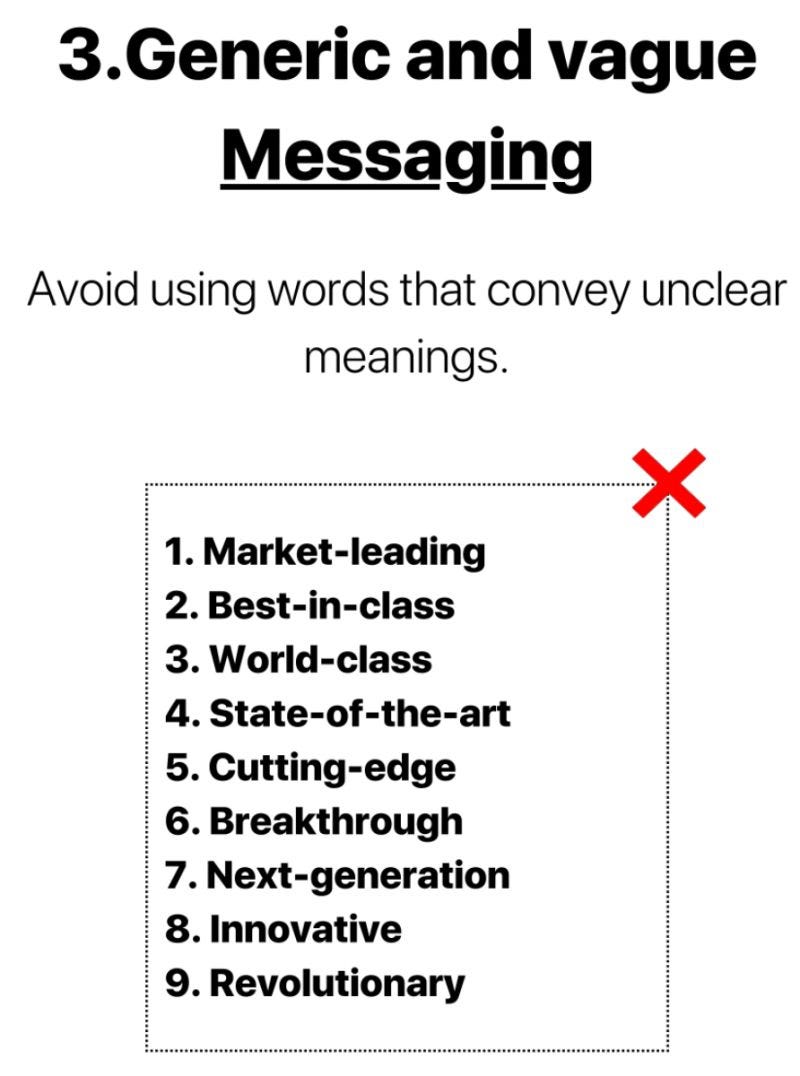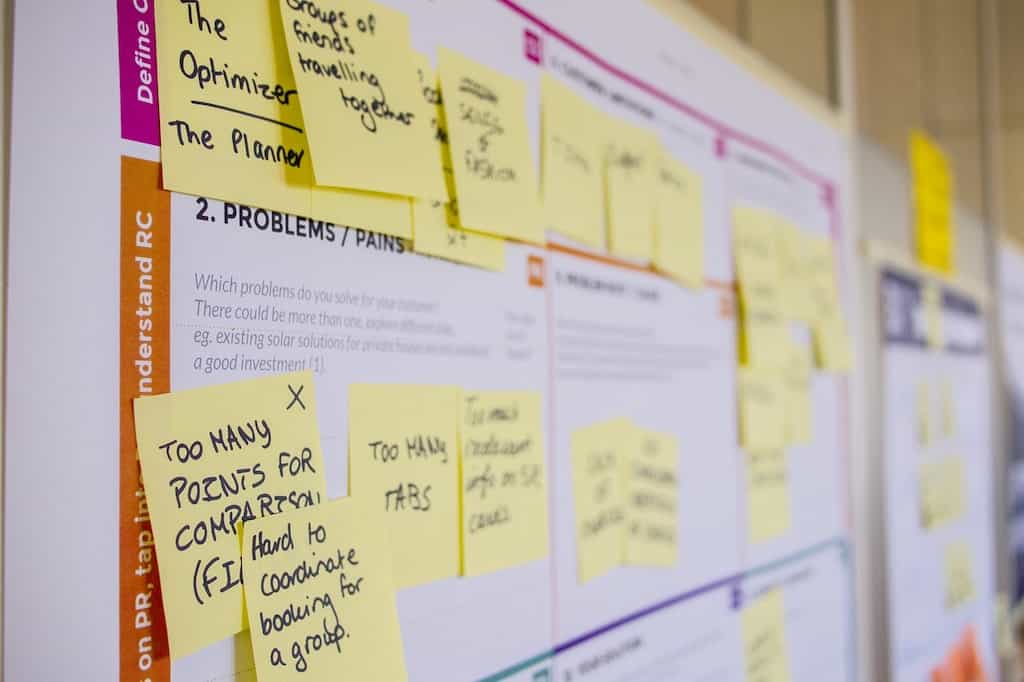As I reflect on my years as a marketer and the journey of building my own SaaS marketing agency, I'm struck by how much of our success has hinged on one crucial skill: crafting compelling messaging. It's a skill that I've honed over countless campaigns, late nights, and lessons learned the hard way. And yet, I'm still amazed by its power to connect with audiences, drive action, and ultimately transform businesses.
You see, messaging isn't just about stringing together a few catchy phrases or highlighting product features. It's about understanding the hopes, fears, and motivations of the people we're trying to reach. It's about distilling complex ideas into clear, memorable language that resonates on a gut level. And it's about telling stories that spark the imagination and create a sense of possibility.
Over the years, I've developed a systematic approach to drafting, layering, and reviewing messaging that has consistently delivered results for our clients. But more than that, it's an approach that I truly believe in because I've seen firsthand the impact it can have. When we get the messaging right, it's like watching a lightbulb go on in someone's mind. They suddenly see their challenges and opportunities in a new light, and they feel empowered to take action.

In this post, I want to share some hard-won insights and specific tactics that have helped me become a pro at this crucial aspect of marketing. But more than that, I intend to invite you into my world, to see the craft of messaging through my eyes and understand why I'm so passionate about getting it right. So grab a coffee, settle in, and let's get into the art and science of creating messages that matter.
The Importance of Context
| Market Condition | Messaging Focus |
|---|---|
| Economic downturn | Cost savings, efficiency, risk reduction |
| Rapid growth | Scalability, innovation, competitive advantage |
| Regulatory changes | Compliance, security, adaptation to new requirements |
| Technological disruption | Agility, future-proofing, leveraging new opportunities |
One of the most critical factors in effective messaging is understanding the context in which it will be received. This goes beyond simple demographics and personas. You need to consider the current market conditions, the competitive landscape, and the specific pain points and aspirations of your target audience at the moment they encounter your message.

For example, when we were working with a client in the remote work software space during the early days of the COVID-19 pandemic, we realized that the usual messaging around productivity and collaboration wasn't going to cut it. Instead, we focused on how their tool could help companies maintain business continuity and support their employees' mental health during a time of unprecedented disruption. By tapping into the zeitgeist, we were able to craft messaging that resonated deeply with our audience.
The Power of Specificity

Another key lesson I've learned is that specificity sells. Vague claims and generic benefits are easily ignored or forgotten. To make your messaging stand out, you need to get specific about the value you deliver and the problems you solve.
Consider these two value propositions for a hypothetical SaaS product:
| Generic | Specific |
|---|---|
| Our software helps you manage your projects more efficiently. | Our software helps construction firms reduce project delays by 30% on average. |
The specific version is much more compelling because it paints a vivid picture of the tangible impact the product can have on the customer's business.
When we're working on messaging for our clients, we always push for specificity. We ask questions like:
- What specific metrics can you improve for your customers?
- What are the most common challenges your product helps overcome?
- How does your solution compare to alternative approaches in terms of time, cost, or quality?
By digging deep into these details, we're able to craft messaging that is both memorable and persuasive.

The Art of Layering
| Funnel Stage | Content Type | Messaging Goal |
|---|---|---|
| Awareness | Educational blog posts | Establish thought leadership and build brand awareness |
| Consideration | Webinars and case studies | Demonstrate expertise and showcase real-world applications |
| Decision | Free trials and demos | Address specific objections and prove value through experience |
| Retention | Newsletters and user events | Reinforce benefits, share success stories, and foster community |
Effective messaging is rarely a one-and-done affair. To truly connect with your audience, you need to layer your messaging over time, gradually building understanding and trust.
One framework I find helpful is the classic AIDA model:
- Attention: Start with a hook that grabs your audience's interest and makes them want to learn more.
- Interest: Provide just enough information to pique their curiosity and get them engaged with your message.
- Desire: Paint a picture of how your product or service can make their lives better or solve a pressing problem they face.
- Action: End with a clear and compelling call-to-action that guides them towards the next step in your sales or marketing funnel.
The key is to think of your messaging not as a single event, but as a journey you're taking your audience on. Each touchpoint should build on the previous one, adding new layers of meaning and motivation.
For instance, when we were working with a client launching a new feature for their customer support software, we started with a teaser campaign hinting at the problem it solved. Then we released a series of educational blog posts and webinars exploring the issue in more depth. Finally, we unveiled the feature with a launch event and targeted ads showcasing its benefits. By the time we made our final pitch, our audience was primed and ready to take action.

The Importance of Review
| Stakeholder | Review Focus |
|---|---|
| Sales | Alignment with common objections and sales enablement needs |
| Customer Success | Consistency with onboarding and support messaging |
| Product | Accuracy in reflecting product capabilities and roadmap priorities |
| Leadership | Coherence with company vision, values, and strategic goals |
No matter how experienced or talented you are, it's essential to get an outside perspective on your messaging before it goes live. It's all too easy to get caught up in your own assumptions and overlook potential gaps or misinterpretations.
When reviewing messaging, I like to ask a few key questions:
- Is it clear? Could someone outside our industry easily grasp the main points?
- Is it compelling? Does it tap into real emotions and motivations?
- Is it credible? Do we back up our claims with evidence or proof points?
- Is it consistent? Does it align with our overall brand voice and positioning?
I also make a point of getting feedback from a diverse range of stakeholders, including sales, customer success, and even current clients when appropriate. Each brings a different lens that can help identify blind spots and make the messaging stronger.
For example, when we were working on a major rebranding project for a client (a log management tech company), we went through multiple rounds of review with their executive team and a select group of customers. One piece of feedback we got was that our proposed tagline, while catchy, didn't fully capture the transformative nature of their platform. Based on that insight, we went back to the drawing board and ultimately landed on messaging that everyone felt truly encapsulated their vision and value proposition.
Putting It All Together
Drafting, layering, and reviewing your messaging is a complex process that requires a mix of strategic thinking, creative instinct, and iterative refinement.
By staying attuned to context, striving for specificity, building layered campaigns, and incorporating feedback, you can craft messaging that not only grabs attention but also drives meaningful action.
At our agency, this approach has helped us deliver outstanding results for our SaaS clients, from boosting trial sign-ups to increasing feature adoption to driving higher contract values. But the real power of effective messaging goes beyond any single metric. By genuinely connecting with your audience and communicating your unique value, you can build lasting relationships that become the foundation of enduring brand loyalty and advocacy.
FAQ
1. What is the most critical aspect of crafting effective messaging?
The most critical aspect of crafting effective messaging is understanding your target audience's context. This involves conducting thorough market research to identify current market conditions, competitive landscape, and your audience's specific pain points and aspirations. By tailoring your messaging to address their unique needs and challenges, you can create content that resonates on a deeper level and motivates them to take action.
2. How can I make my messaging stand out from competitors?
To make your messaging stand out, focus on specificity and quantifiable benefits. Instead of relying on generic claims like "improving efficiency," highlight the specific metrics your product or service can improve, such as "reducing project delays by 30% for construction firms." Use case studies and testimonials to showcase the tangible impact your solution has had on real customers, making your messaging more credible and memorable.
3. What is the AIDA model, and how can it help with messaging?
The AIDA model is a framework for structuring persuasive messaging, which stands for Attention, Interest, Desire, and Action. To apply this model, start by grabbing your audience's attention with an intriguing headline or visual. Then, pique their interest by providing valuable information that addresses their needs or challenges. Next, cultivate desire by showcasing how your product or service can solve their problems or improve their situation. Finally, include a clear call-to-action that encourages them to take the next step, such as signing up for a free trial or requesting a consultation.
4. How often should I review and update my messaging?
It's essential to review and update your messaging regularly to ensure it remains relevant and effective. At a minimum, conduct a thorough review annually, or whenever there are significant changes in your market, product, or target audience. Additionally, continuously monitor the performance of your messaging through metrics like engagement rates, conversion rates, and customer feedback. Use these insights to make iterative improvements and optimize your messaging over time.
5. Who should be involved in the messaging review process?
To ensure your messaging is comprehensive and aligned with your overall business objectives, involve stakeholders from different departments in the review process. This may include representatives from sales, marketing, customer success, product development, and executive leadership. Each stakeholder brings a unique perspective and can help identify potential gaps, inconsistencies, or opportunities for improvement in your messaging.
6. How can I adapt my messaging to different stages of the customer journey?
To effectively guide prospects through the customer journey, tailor your messaging to each stage of the funnel. In the awareness stage, focus on educational content that establishes your thought leadership and builds brand visibility. During the consideration stage, provide more in-depth resources like webinars, case studies, and product comparisons to demonstrate your expertise and showcase real-world applications. At the decision stage, offer free trials, demos, or consultations to address specific objections and prove value through hands-on experience. Finally, in the retention stage, share success stories, product updates, and exclusive offers to reinforce benefits and foster long-term loyalty.
7. What role does customer feedback play in shaping messaging?
Customer feedback is invaluable in shaping your messaging, as it provides direct insights into how your target audience perceives and experiences your brand, product, or service. Regularly collect feedback through surveys, interviews, and customer support interactions to identify common pain points, objections, and success stories. Use this information to refine your messaging, addressing specific concerns and highlighting the most compelling benefits. By incorporating customer feedback, you can create messaging that is more authentic, relatable, and persuasive.
8. How can I ensure my messaging aligns with my brand voice and values?
To maintain consistency and authenticity in your messaging, ensure it aligns with your brand voice and values. Develop a clear brand messaging framework that outlines your unique selling proposition, target audience, key benefits, and desired tone and style. Share this framework with all team members involved in creating content or communicating with customers, and provide regular training and feedback to ensure adherence. When reviewing messaging, always ask yourself if it accurately reflects your brand personality and reinforces your core values.
9. What metrics should I track to measure the effectiveness of my messaging?
To gauge the impact of your messaging, track a combination of engagement, conversion, and revenue metrics. Key performance indicators (KPIs) may include email open rates, click-through rates, social media shares, time on page, bounce rates, form completions, free trial sign-ups, demo requests, and sales qualified leads. Additionally, monitor customer satisfaction scores, retention rates, and net promoter scores to assess how well your messaging resonates with existing customers. Regularly analyze these metrics to identify trends, test new approaches, and continually optimize your messaging performance.
10. How can I balance creativity and data in my messaging strategy?
Effective messaging requires a balance of creativity and data. While data provides valuable insights into audience preferences, market trends, and performance metrics, creativity is essential for crafting compelling stories and memorable phrases that capture attention and inspire action. To strike this balance, start by conducting thorough research and analysis to identify key insights and opportunities. Then, use this information as a foundation for brainstorming creative concepts and messaging ideas. Test different approaches and measure their impact, using data to refine and optimize your messaging over time. Encourage collaboration between analytical and creative team members to leverage their unique strengths and perspectives. By combining the power of data-driven insights with the art of storytelling, you can create messaging that is both strategic and impactful.






